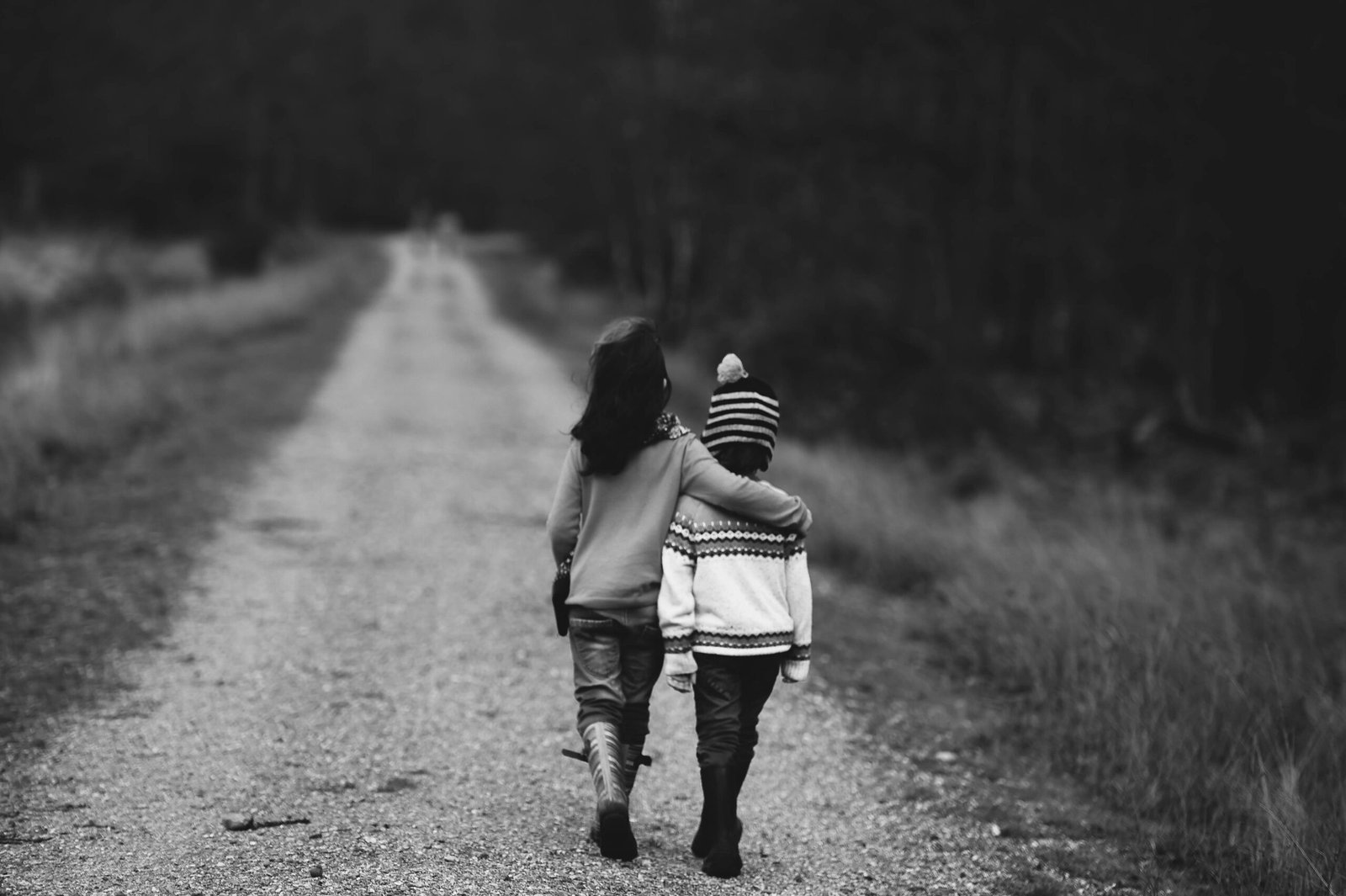
“We’re all just walking each other home” – A visual representation of shared human journey
T
he profound act of walking each other home begins in moments like these. You’re leaving your friend’s house after a difficult conversation about her divorce when she walks you to your car, even though it’s late and cold. As you unlock the door, she says, “Thanks for listening. I needed someone to sit with this mess with me.”
Driving home through empty streets, you realize what just happened. For two hours, you both acknowledged the same truth: that life is hard, that we’re all fumbling through it, and that sometimes the only thing that helps is not being alone in the fumbling.
This is what Ram Dass meant when he said we’re all just walking each other home. Not that we’re going somewhere together, but that we’re all heading toward the same destination – mortality, mystery, the unknown – and the journey is less frightening when we don’t walk it alone.
Your neighbor, Mrs. Chen, has been battling cancer for eight months. You don’t talk about it directly, but when you see her struggling with groceries, you help. When she sits on her porch looking tired, you sit too. Neither of you mentions that you’re both afraid – she of dying, you of watching someone die. You just keep each other company in the presence of what cannot be fixed.
This is the work: showing up for the parts of existence that have no solutions, only witnesses.
The Meaning of Walking Each Other Home
At the coffee shop, you overhear a conversation between two strangers. One is explaining her recent job loss, the other listening with the kind of attention usually reserved for people we actually know. They’re not friends, probably never will be. But in this moment, they’re walking each other through a small portion of human experience.
Maybe this is what community actually means – not permanent bonds or shared beliefs, but temporary accompaniment through whatever stretch of the path we happen to share. This is the essence of what it means to be walking each other home.
Your grandfather calls every Sunday, not because either of you has much news, but because the ritual creates a rhythm, a reliable touchpoint in the chaos of weekly existence. He’s ninety-one; you both know these calls have an expiration date. That knowledge makes them more precious, not less.
“How are you holding up?” he asks, and the question carries weight because he knows what holding up requires at his age, at any age. He’s further along the path, offering guidance to someone still figuring out the route.
Intergenerational Walking
This is intergenerational walking – the old accompanying the young through territories they’ve already navigated, the young accompanying the old through territories they’ve yet to explore. It’s another form of walking each other home across generations.
Your friend Marcus texts during his father’s final weeks: “I don’t know how to do this.” You don’t have answers, only presence. You show up to the hospital, sit in uncomfortable chairs, help navigate conversations with doctors who speak in careful euphemisms. You’re not fixing anything, just making sure he doesn’t face the unfixable alone.
Later, when your own loss comes – and it will come – Marcus will return the favor. This is how we create safety nets made of presence rather than solutions. This reciprocal walking each other home sustains us through life’s hardest transitions.
Maybe the reason we resist this metaphor is that it acknowledges our shared destination. We prefer to think we’re going different places, that some of us will figure out how to avoid the ending everyone else faces. But the path leads where it leads, and the only choice is whether we walk it in isolation or in the company of fellow travelers.
The bartender at your local place remembers your usual drink, asks about your week, listens to whatever small troubles you’re carrying. It’s not therapy or friendship exactly, but it’s accompaniment. For twenty minutes, you’re not alone with your thoughts. These small acts of walking each other home happen in the most ordinary places.
These brief moments of witnessed existence might be the most important work any of us do.
Healing Through Connection
Your therapist says something that stays with you: “Healing doesn’t happen in isolation. It happens in relationship, even temporary relationship, even with people who can’t fix what’s broken but can sit with you while it’s breaking.”
This reframes everything. Maybe we’re not walking each other toward some destination where everything will be resolved. Maybe we’re walking each other through the experience of being human, which includes joy and loss, connection and loneliness, clarity and confusion, in roughly equal measure.
The walk home isn’t about reaching home. It’s about not walking alone.
Standing at your friend’s grave six months later, you understand something new about the metaphor. She’s reached her destination, but she walked you partway toward yours. The conversations you had, the presence you shared, the way she helped you practice being human – that accompaniment continues even after the walking stops.
Maybe this is why we’re all walking each other home: not because home is a place we arrive at together, but because the walking itself, the shared journey through mystery and uncertainty and the full catastrophe of existence, transforms strangers into companions and companions into guides.
The path leads where it leads. But we don’t have to walk it alone.
Share Your Reflection
Your insights enrich our collective understanding. What thoughts does this spark in your mind?